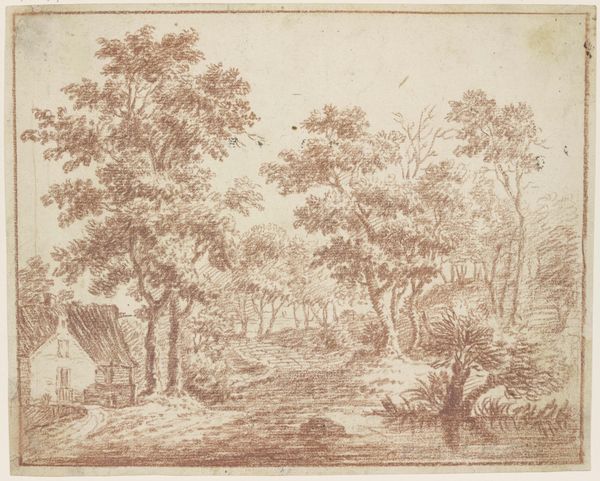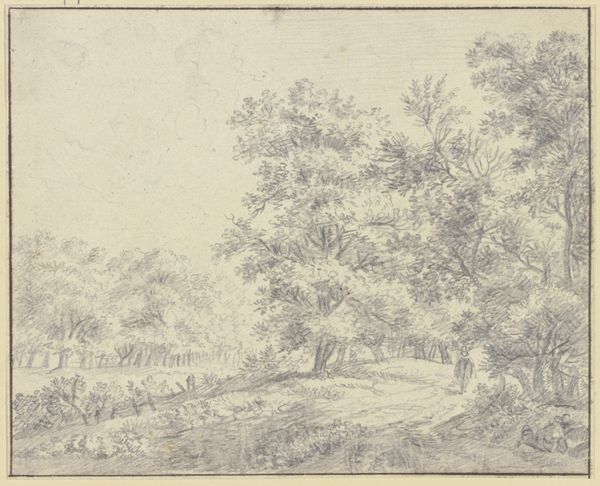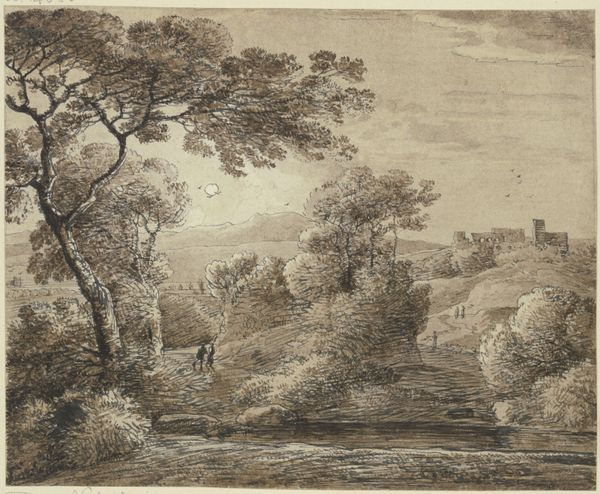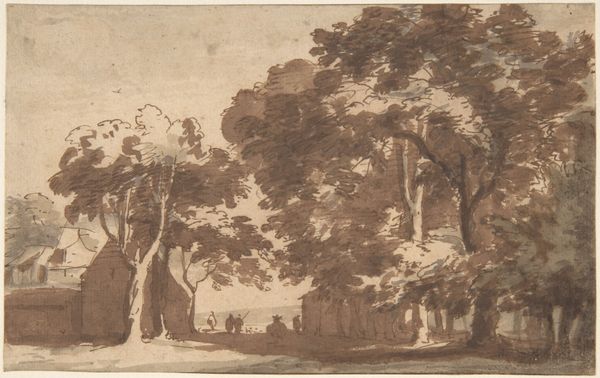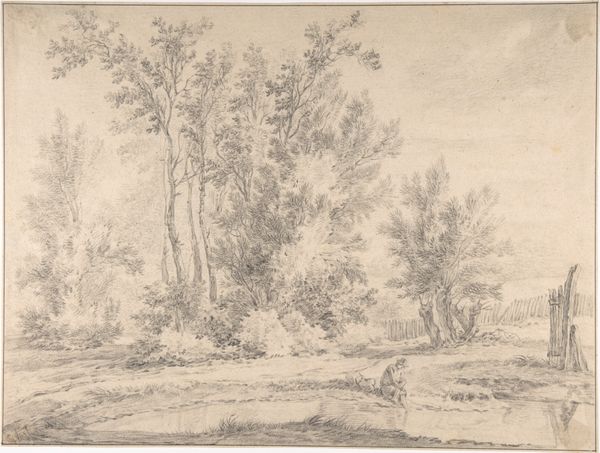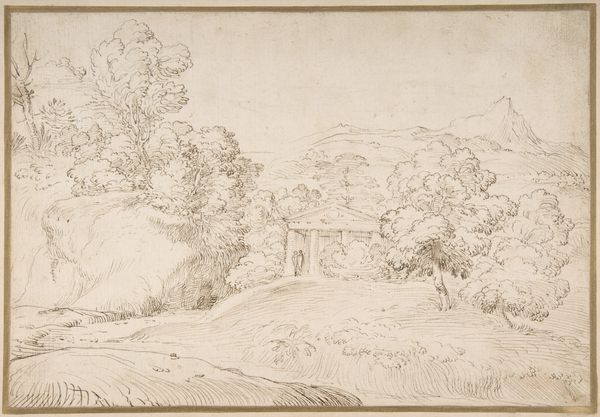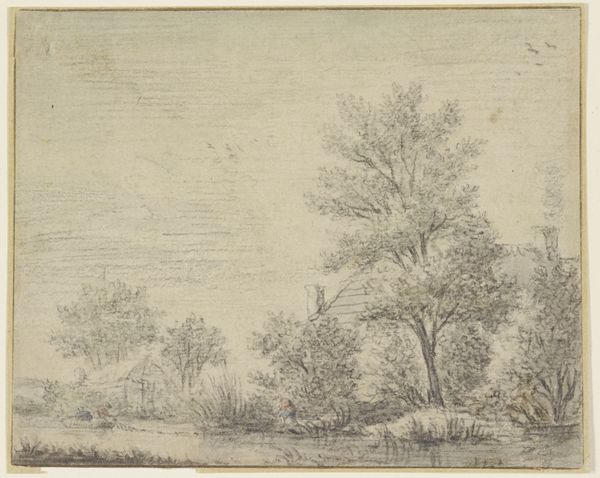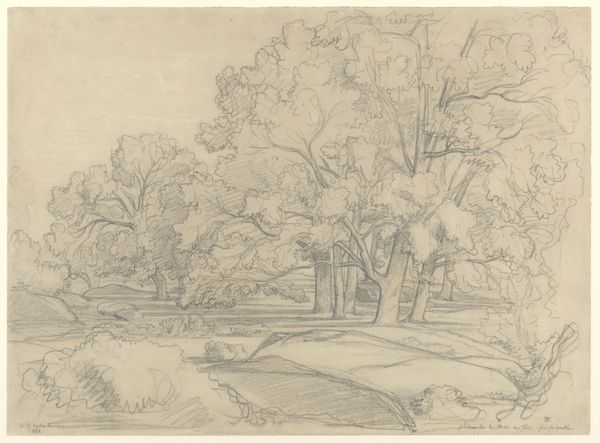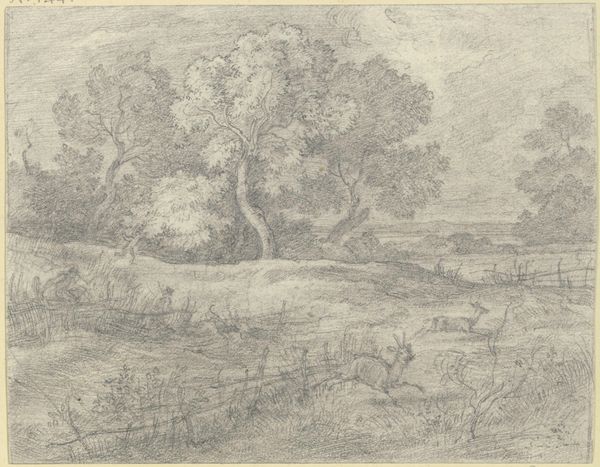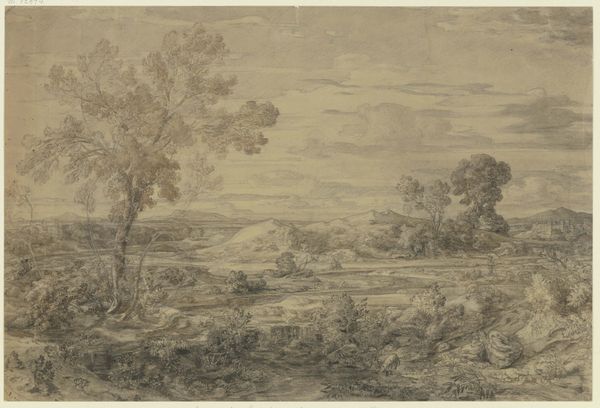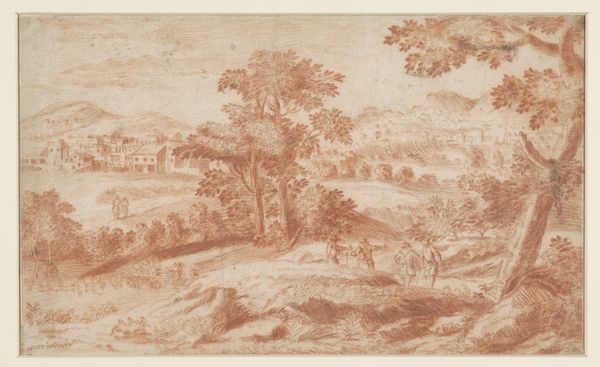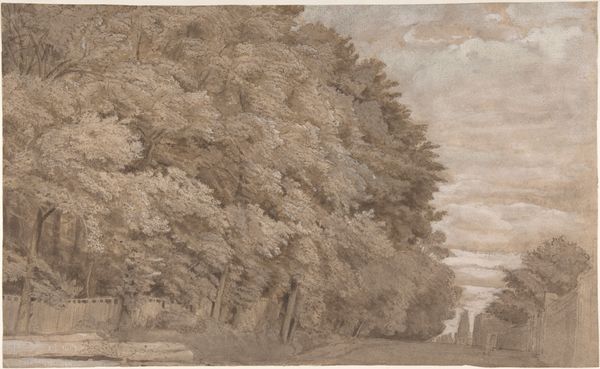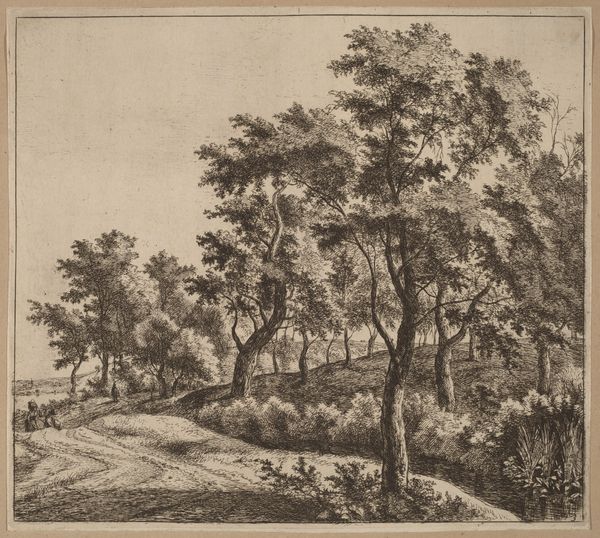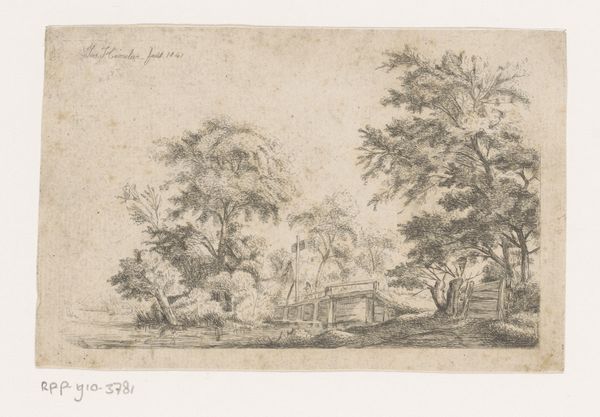
drawing, ink, indian-ink, pencil, chalk
#
drawing
#
baroque
#
ink painting
#
landscape
#
ink
#
sketch
#
indian-ink
#
pencil
#
chalk
Copyright: Public Domain
Editor: So, this is "Waldpartie, vorne ein Wasser," which translates to "Woodland Scene, Water in Front," by Lodewijk de Vadder. It's an ink drawing – probably made with pen, chalk and pencil too. It’s a quiet piece, very simple in its composition. What do you see in this drawing? Curator: What I see is a window into the social construction of nature, specifically the Flemish landscape. How do we frame wilderness, and for whom? The baroque era was a period of intense social stratification, and depictions of nature weren’t just innocent scenery. Editor: Interesting. In what way? Curator: Consider who had the leisure and the means to appreciate and commission these landscapes. Often, it was the landed gentry, who directly benefited from the exploitation of the land and its resources. De Vadder’s delicate strokes, rendering the play of light on the water, might obscure a darker reality: the enclosure of common lands, the displacement of rural communities. Who had access to that "waldpartie"? Editor: So, you are suggesting it idealizes ownership… making the scene picturesque to distract from the ways land was being appropriated? Curator: Exactly! How does this aesthetic ideal serve power? Consider the subtle violence embedded in claiming and framing land, even through art. Doesn’t the composition invite us, as viewers, to participate in this act of possession? Editor: That’s a perspective I hadn't considered. It's easy to just see beauty without thinking about the social implications behind it. Curator: Art constantly interacts with social and political structures of the time; unpacking this allows for deeper and more thoughtful viewing, I think.
Comments
No comments
Be the first to comment and join the conversation on the ultimate creative platform.
